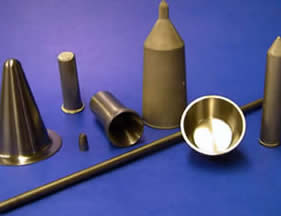 Acetone is an organic compound used to synthesize several chemical solutions. Its chemical formula is C3H6O.
Acetone is an organic compound used to synthesize several chemical solutions. Its chemical formula is C3H6O.

It is a colorless and extremely volatile substance with a very distinct odor. One of its common uses is as a cleaning agent in industry, laboratories, and homes. Acetone is excellent for the removal of paint from nails or paint brushes.
The body produces acetone to break down fat. Insulin moves sugar or glucose out of the blood and into cells to be used as energy. When there isn’t enough insulin, the body burns stored fat. The liver breaks down the fat into a ketone, which is acetone. Too much acetone in the body causes the disease ketosis.
Six industries make extensive use of acetone – pharmaceutical, textile, electronic, environmental, personal care, and petroleum. In the pharmaceutical, textile, electronic, and personal care industries, it is used to clean components and parts. Acetone is helpful in cleaning environmental accidents. It breakdowns an oil to sludge on the surface of water without being harmful to the environment. As an additive to gasoline, it helps to diffuse gas more rapidly by thinning the gas vapors for combustion improving fuel efficiency.
Acetone has a low toxicity and has been declared by the FDA as being safe for indirect use in the food industry. All of the world health organizations have tested and studied acetone to determine if it is hazardous to humans and identified it as having no critical health effects from exposure. Acetone is a pure substance consisting of an acetone molecule.
 Alloy Suppliers
Alloy Suppliers Aluminum
Aluminum Aluminum Extrusions
Aluminum Extrusions Copper-Brass-Bronze
Copper-Brass-Bronze Magnets
Magnets Nickel
Nickel Stainless Steel
Stainless Steel Stainless Steel Tubing
Stainless Steel Tubing Steel Service Centers
Steel Service Centers Titanium
Titanium Tungsten
Tungsten Wire Rope
Wire Rope Castings & Forgings
Castings & Forgings Bulk Material Handling
Bulk Material Handling Electrical & Electronic Components
Electrical & Electronic Components Flow Instrumentation
Flow Instrumentation Hardware
Hardware Material Handling Equipment
Material Handling Equipment Metal Cutting Services
Metal Cutting Services Metal Forming Services
Metal Forming Services Metal Suppliers
Metal Suppliers Motion Control Products
Motion Control Products Plant & Facility Equipment
Plant & Facility Equipment Plant & Facility Supplies
Plant & Facility Supplies Plastic Molding Processes
Plastic Molding Processes Pumps & Valves
Pumps & Valves Recycling Equipment
Recycling Equipment Rubber Products & Services
Rubber Products & Services







